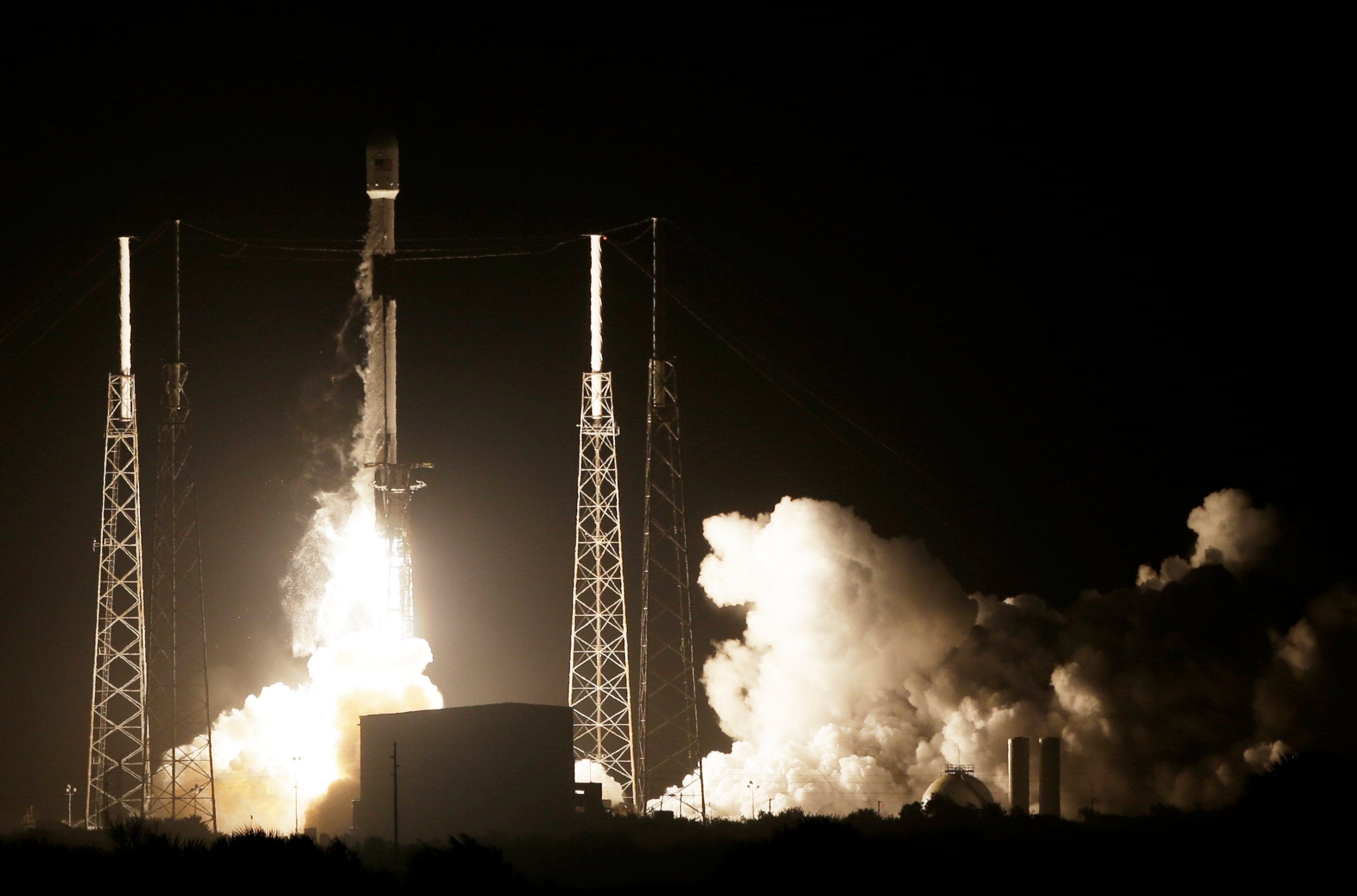SpaceX launch: Israeli spacecraft lifts off for first-ever privately funded Moon mission
Country bids to become just fourth country to conduct lunar landing
Your support helps us to tell the story
From reproductive rights to climate change to Big Tech, The Independent is on the ground when the story is developing. Whether it's investigating the financials of Elon Musk's pro-Trump PAC or producing our latest documentary, 'The A Word', which shines a light on the American women fighting for reproductive rights, we know how important it is to parse out the facts from the messaging.
At such a critical moment in US history, we need reporters on the ground. Your donation allows us to keep sending journalists to speak to both sides of the story.
The Independent is trusted by Americans across the entire political spectrum. And unlike many other quality news outlets, we choose not to lock Americans out of our reporting and analysis with paywalls. We believe quality journalism should be available to everyone, paid for by those who can afford it.
Your support makes all the difference.An Israeli spacecraft is attempting the first ever privately-funded moon landing after it hitched a ride aboard a SpaceX rocket.
The launch of the Falcon 9 rocket on Thursday evening is the first stage in Israel‘s bid to become just the fourth country to successfully conduct a lunar landing, after Russia, the US and China.
An Indonesian communications satellite was the main cargo aboard the rocket, which illuminated the sky as it took off from Cape Canaveral, Florida.
But Israel’s privately funded lunar lander – a first not just for Israel but commercial space – generated the most buzz.
The spacecraft – called Beresheet, Hebrew for Genesis or “In The Beginning” – will take nearly two months to reach the moon.
“We thought it’s about time for a change, and we want to get little Israel all the way to the moon,” said Yonatan Winetraub, co-founder of Israel’s SpaceIL, a nonprofit organisation behind the effort.
The moon, nearly full and glowing brightly, beckoned as it rose in the eastern sky. Within an hour of liftoff, Beresheet was already sending back data and had successfully deployed its landing legs, according to SpaceIL.
“We’ll keep analysing the data, but bottom line is we entered the very exclusive group of countries that have launched a spacecraft to the moon,” said Yigal Harel, head of SpaceIL’s spacecraft programme.
Prime minister Benjamin Netanyahu was watching the launch live from the Israeli control centre in Yehud, near Tel Aviv.
“This is a big step for Israel, but a giant step for Israeli technology,” he said.
The four-legged Beresheet, barely the size of a washing machine, will circle Earth in ever bigger loops until it’s captured by lunar gravity and goes into orbit around the moon. Touchdown would be 11 April at the Sea of Serenity.
Nasa’s Apollo missions in the 1960s and 1970s took about three days to get astronauts to the moon, but they used monstrous Saturn V rockets.
The $100m (£78m) Beresheet mission could not afford its own rocket – even a little one – so the organisers opted for a ride share. That makes for a much longer trip; the moon is currently nearly 230,000 miles away.

“This is Uber-style space exploration, so we’re riding shotgun on the rocket,” Mr Winetraub explained at a news conference on the eve of launch.
The US Air Force also has a small research spacecraft aboard the rocket, for a one-year mission in orbit around Earth.
The Soviet Union was the first to put a spacecraft on the moon, Luna 2, in 1959. Nasa followed with the Ranger 4 spacecraft in 1962. Last month, China became the first country to land on the far side of the moon.
Apollo 11 astronaut Buzz Aldrin quickly offered congratulations following Thursday’s launch. So did Nasa administrator Jim Bridenstine, who called it “a historic step for all nations and commercial space as we look to extend our collaborations beyond low-Earth orbit and on to the moon”.
Nasa has a laser reflector aboard Beresheet and is offering its Deep Space Network for communication.
“All the best to @TeamSpaceIL as it starts its journey tonight on a @SpaceX #Falcon9 from Florida to my old stomping ground ... the moon,” Aldrin tweeted.
The Beresheet mission originally was part of the Google Lunar XPrize competition and even made the final cut before the contest ended last year without a winner. The organisers decided to press ahead on their own, with donations from billionaires as well as schoolchildren.
Lunar surface operations are meant to last just two days. Beresheet will measure the magnetic field at the landing site, and send back data and pictures. A time capsule is aboard the lander — which includes a picture of Israeli astronaut Ilan Ramon, who died aboard space shuttle Columbia in 2003 — as well as a lunar library containing 30 million pages on a disk from the US-based Arch Mission Foundation.
Ramon’s widow, Rona, was a big supporter of Beresheet; she died of cancer in December.
Following liftoff, SpaceX recovered the first-stage booster, which flew twice last year. The booster landed smoothly on an offshore ocean platform, after the hottest re-entry yet, according to SpaceX founder and chief executive Elon Musk. Sparks from burning metal were visible in the landing video.
Mr Musk said the booster will fly a fourth time in April, during a launch abort test of the new crew Dragon capsule. No one will be aboard.
Additional reporting by AP

Join our commenting forum
Join thought-provoking conversations, follow other Independent readers and see their replies
Comments